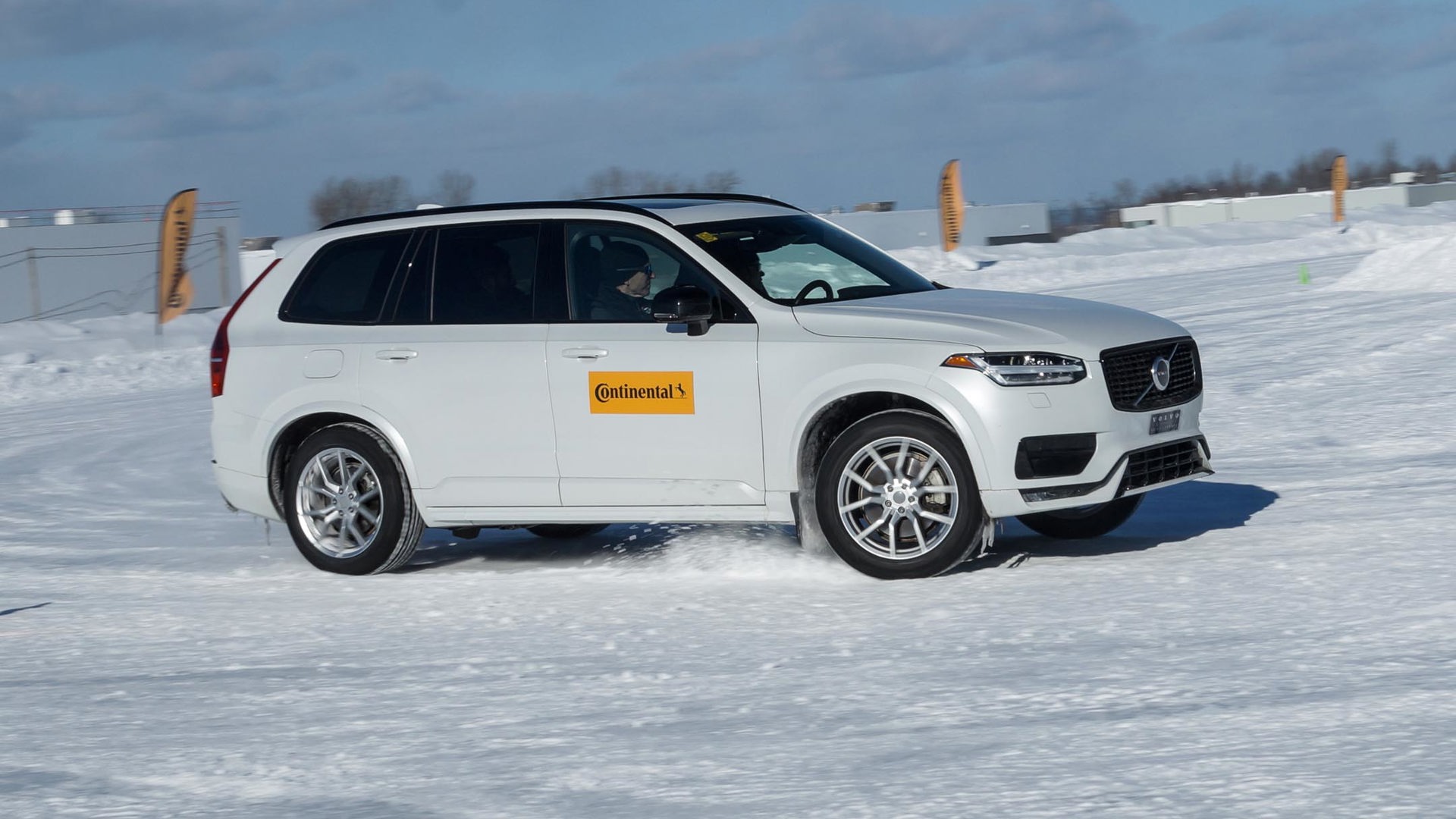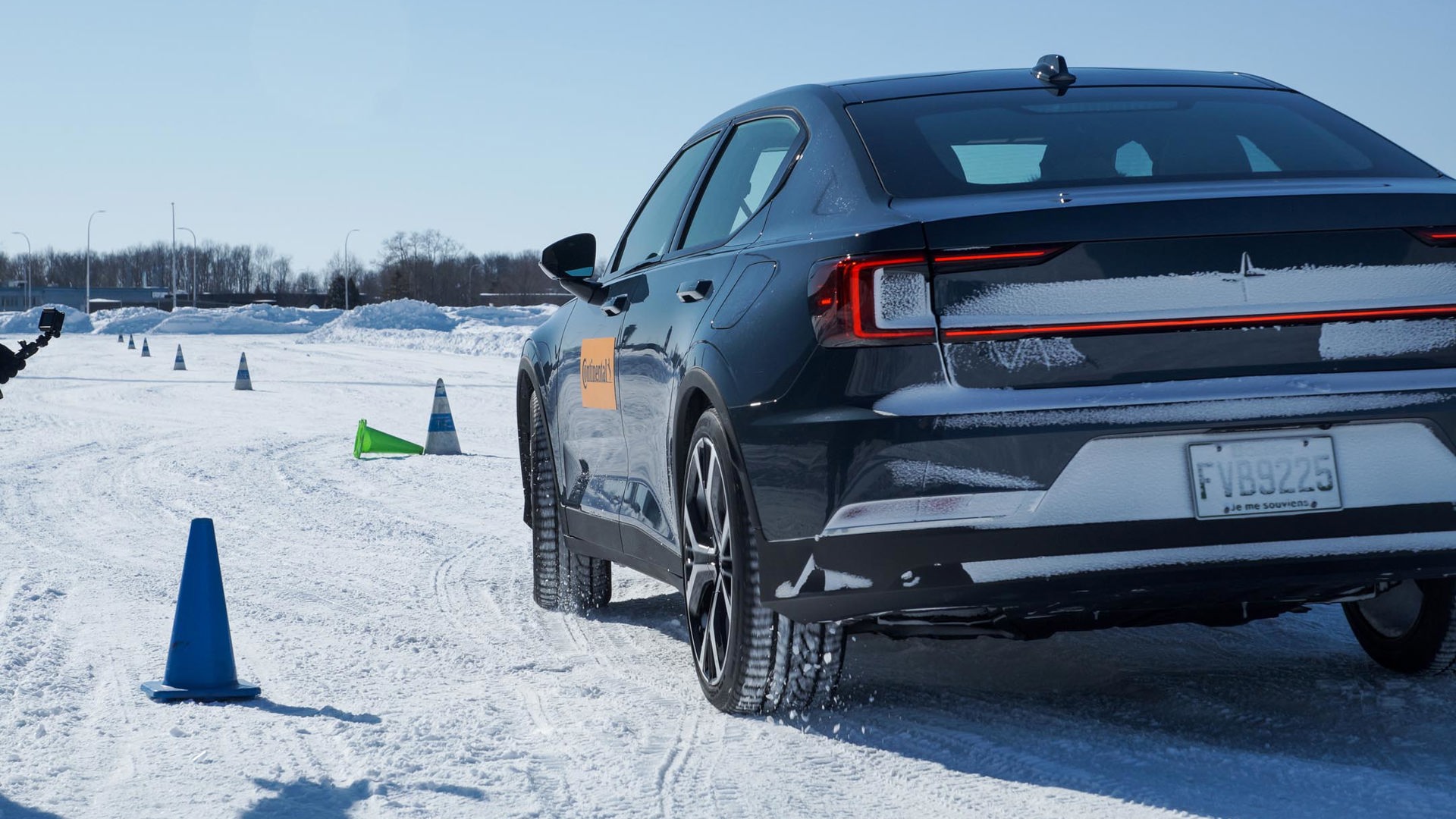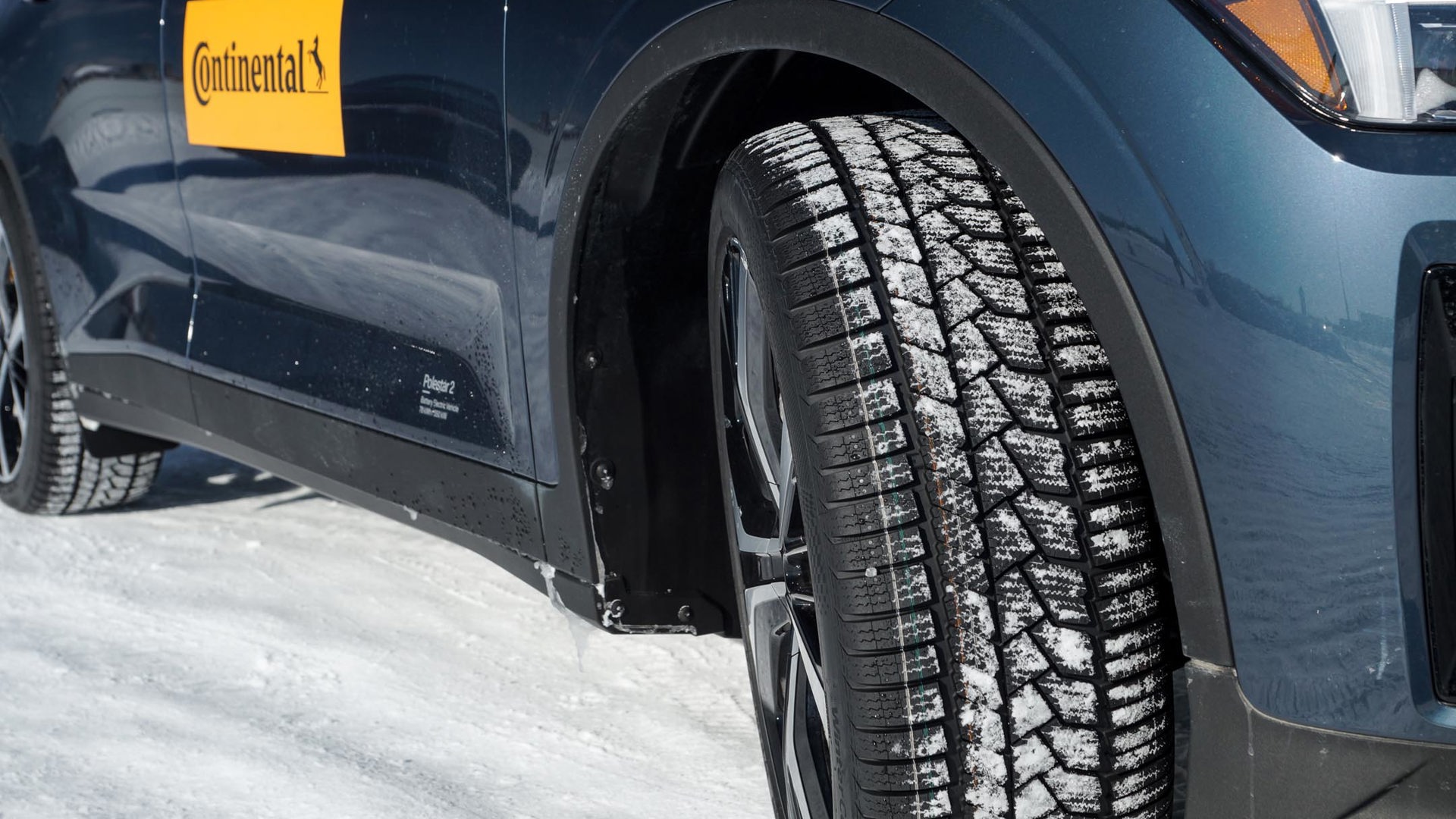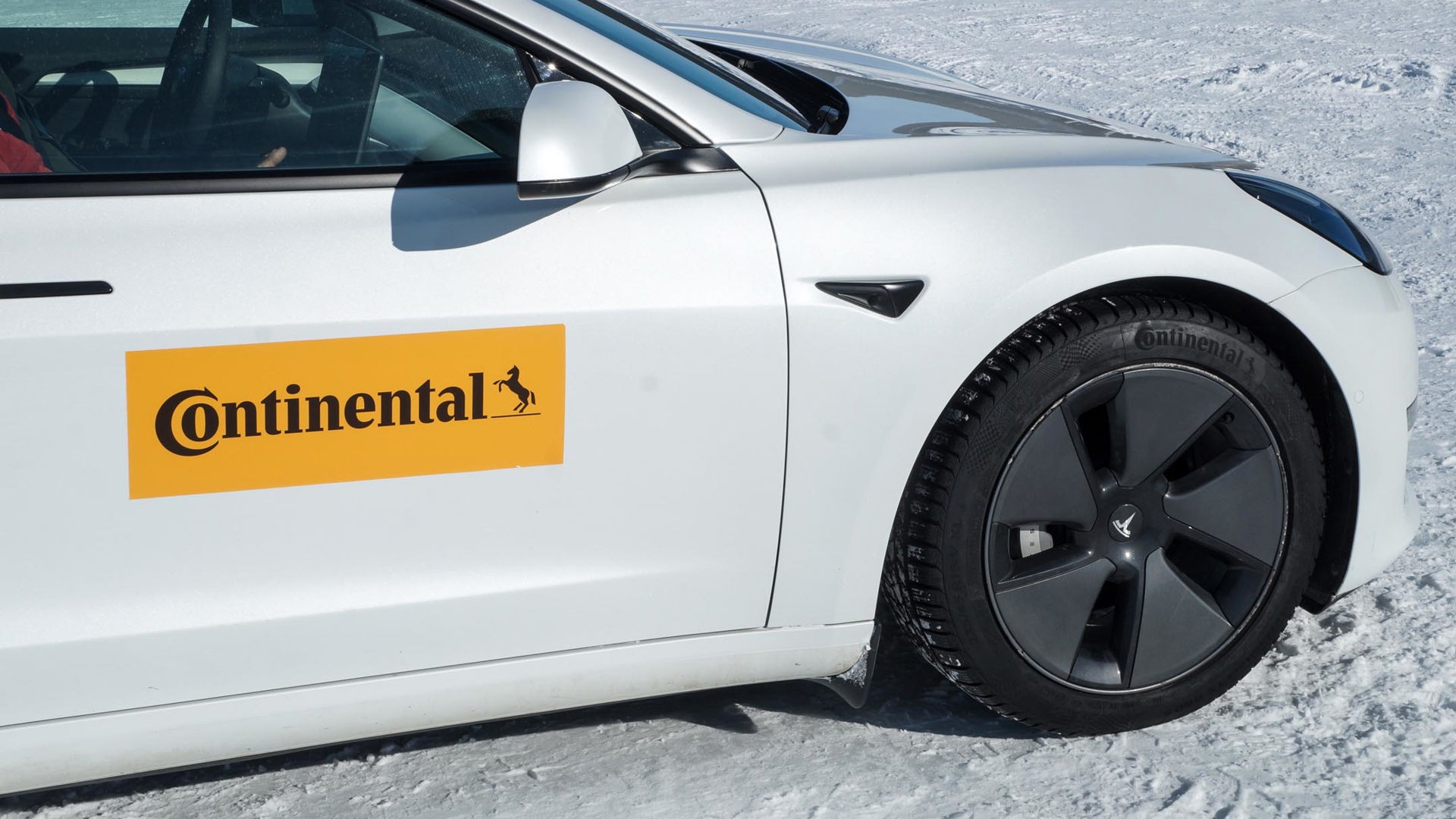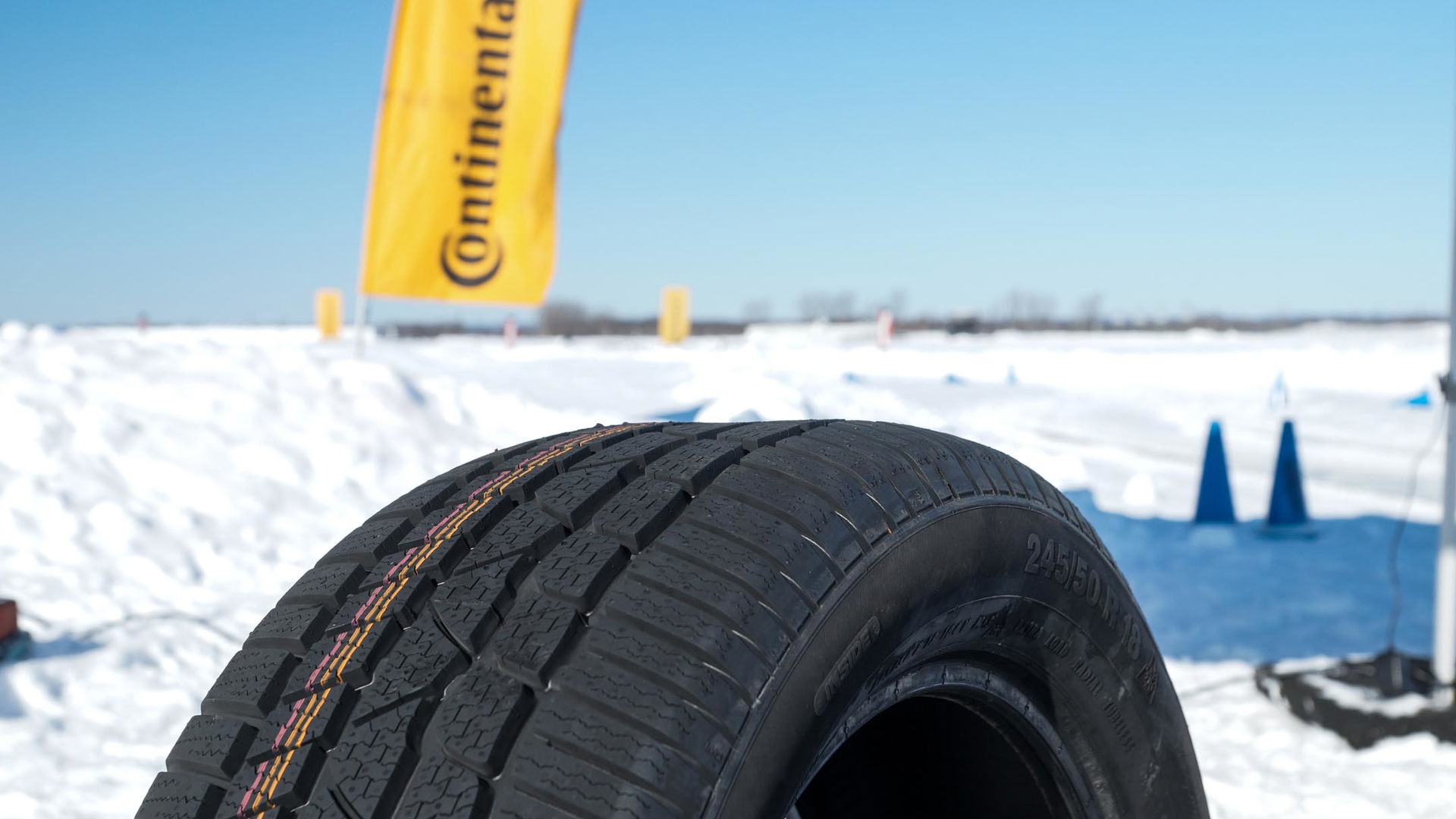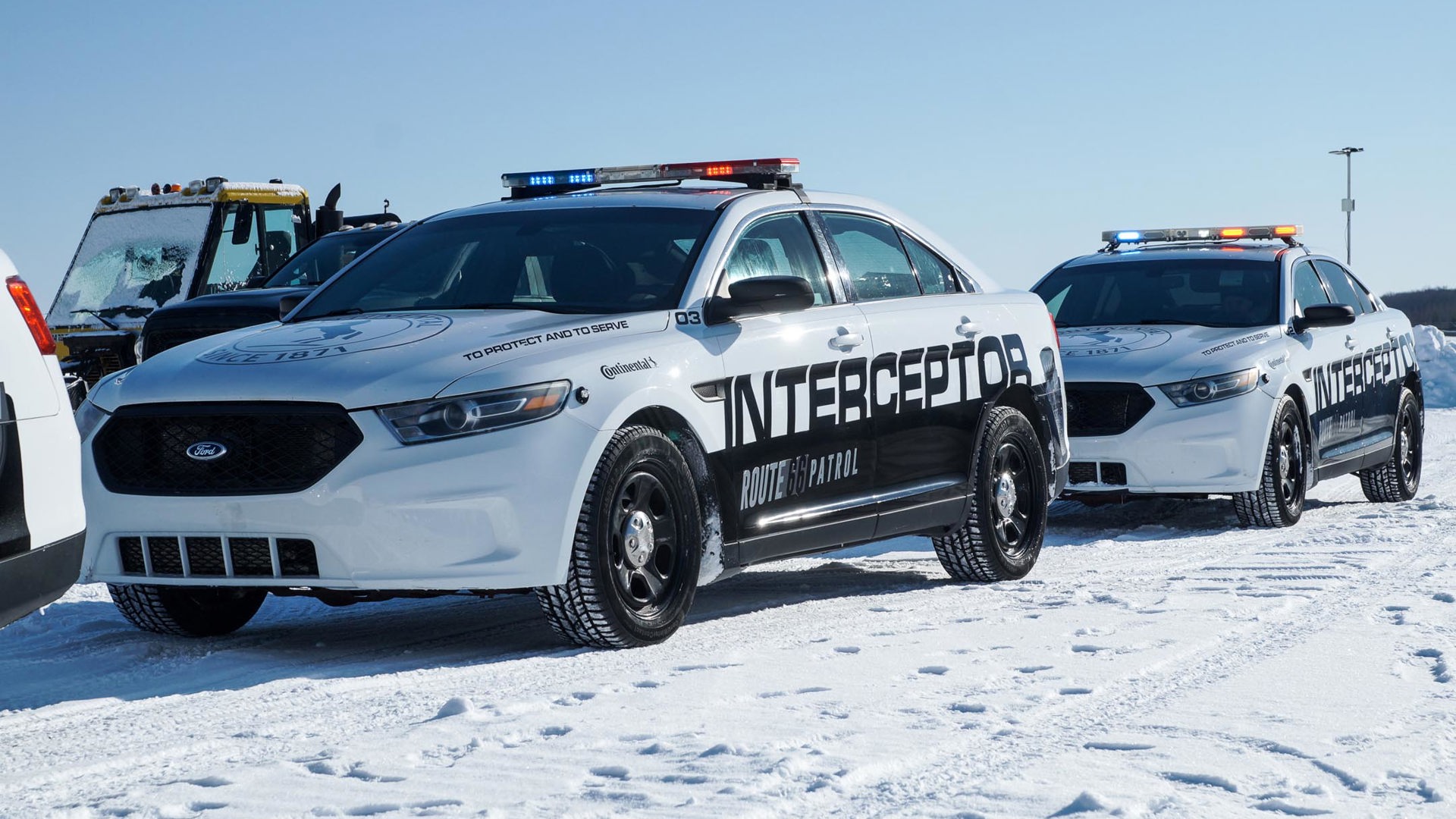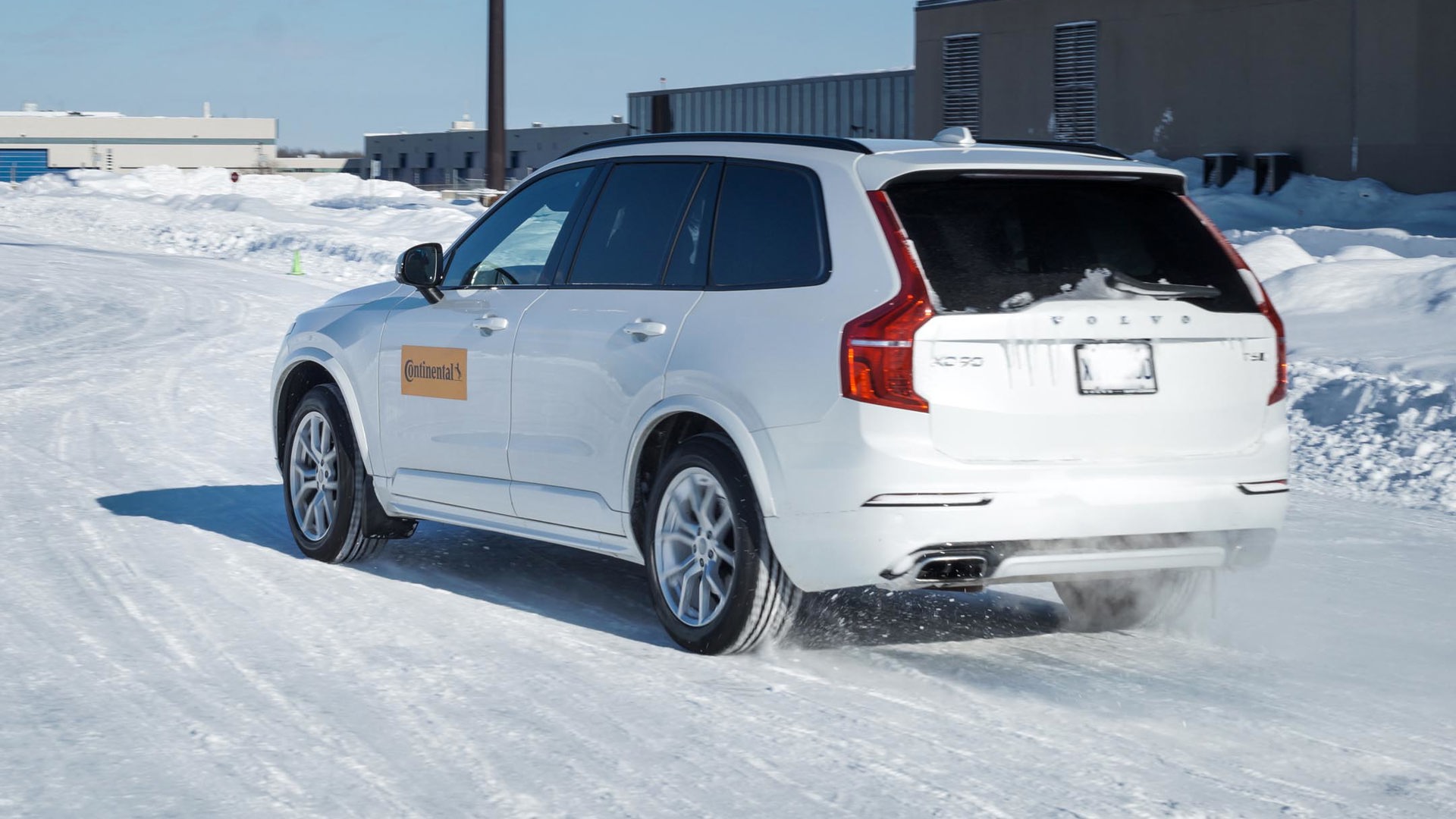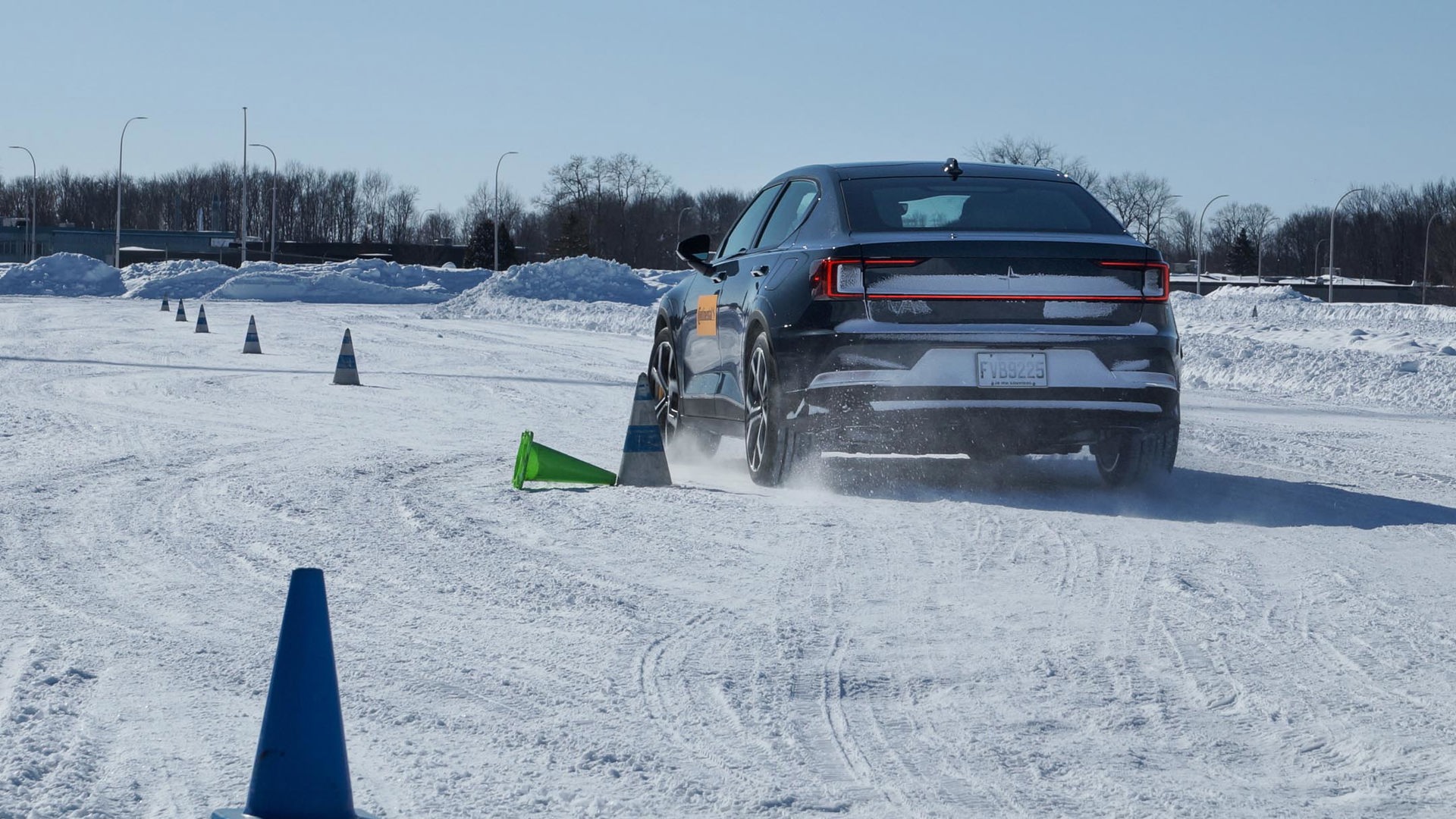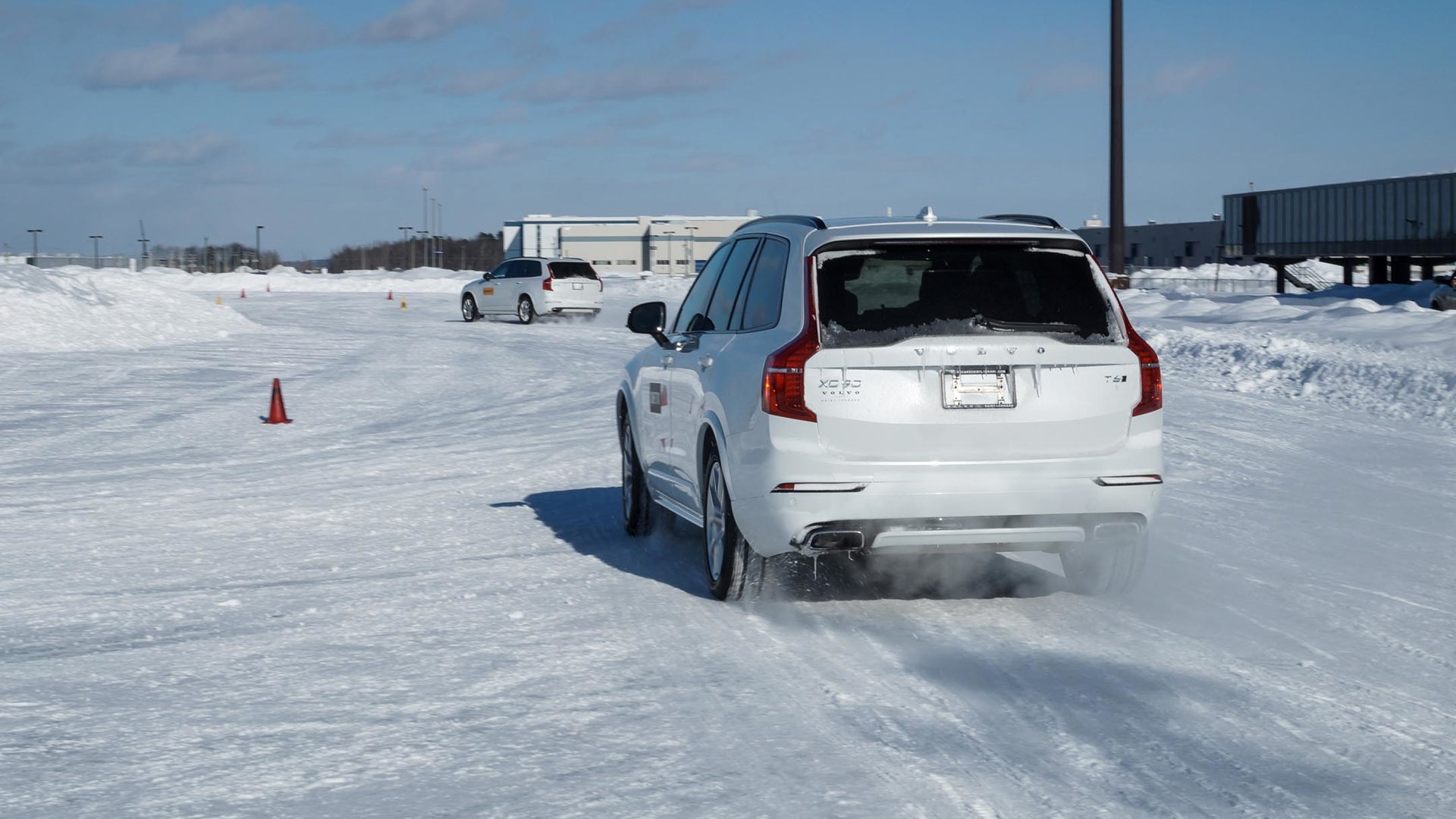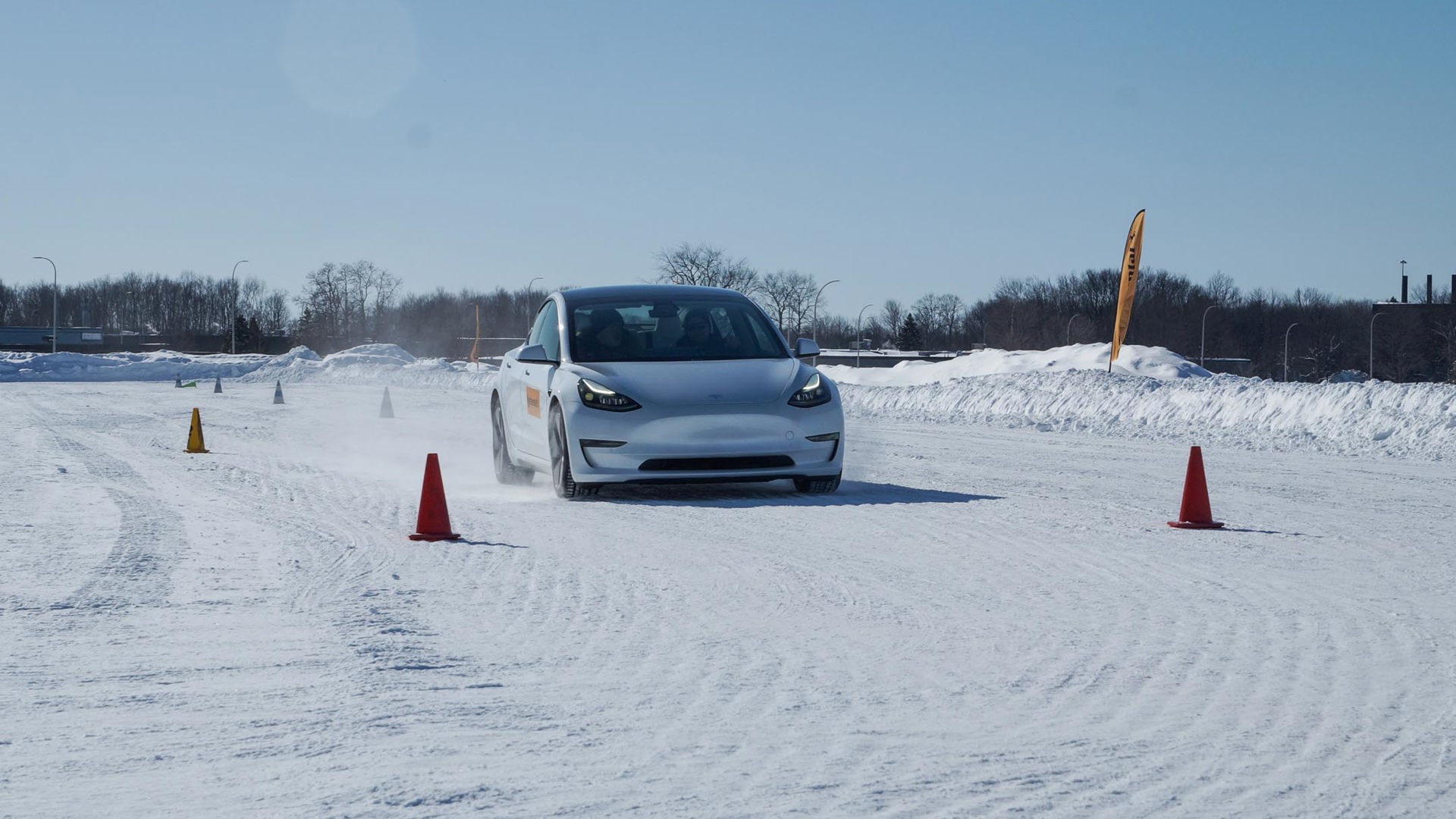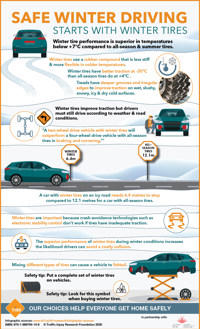Canadians everywhere are used to hearing about the benefits of winter tires, but most will only associate their usefulness with being able to drive through snow. In reality, one of the biggest benefits of winter tires is the increased stopping power they provide.
At only 40 km/h, emergency braking distances with winter tires can be half as long as compared to all-seasons. This means that winter tires can stop two to four car lengths sooner on snow or ice, respectively. In practical terms, this is the difference between having a collision and avoiding one, and these dramatic differences only increase at higher speeds.
Continental Tire Canada recently hosted us at the ICAR Complex in Mirabel to test winter tires in three different driving conditions: powder snow, packed snow, and ice. Test vehicles were the Volvo XC90 crossover, ex-police Ford Taurus sedans, and electric vehicles including the Polestar 2 and Tesla Model 3.
Confidence and control were the name of the game through all the tests, and we were able to prove to ourselves in a safe and closed course environment where having the right tires made all the difference. Braking distances were less than what any all-season tire could manage, and steering inputs on slalom testing showed that drivers needed to push pretty hard before the cars with winter tires started to lose control. With their high levels of torque and oomph from the get-go, the electric cars still stayed composed, and the tires allowed traction and stability control systems to work more effectively.
It is universally accepted that at temperatures below 7 degrees Celsius, winter tires offer a critical improvement over all-season tires. Thanks to softer rubber compounds that remain functional at lower temperatures, a winter tire on pavement has better traction at -30 degrees Celsius than an all-season does at +4 degrees. Through their work, Ottawa’s Traffic Injury Research Foundation put together a very useful infographic that highlights the main benefits of winter tires (see right).
When Should I Use Winter Tires?
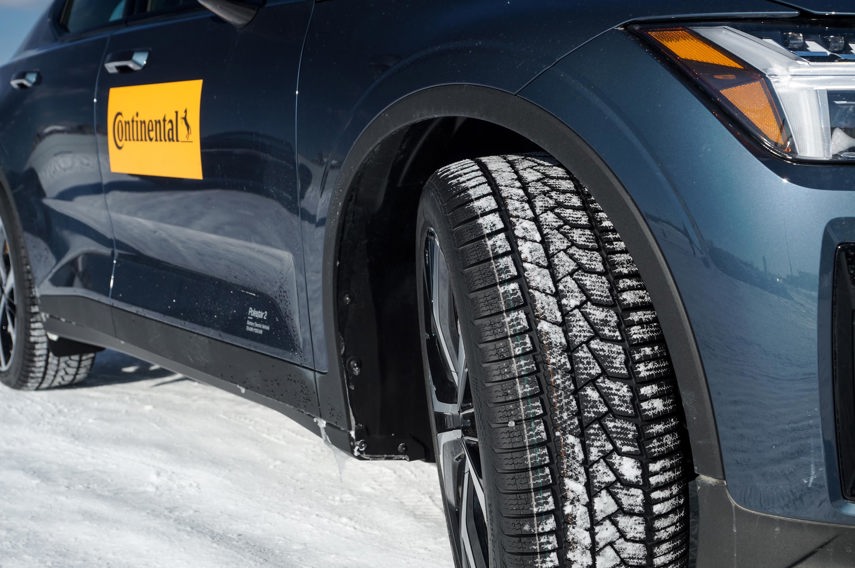
The 7 degrees is also a figure that’s used by Transport Canada, and keep in mind that this isn’t even getting into proper snow and ice-covered roads – we’re talking ambient or road surface temperatures only. Average winter highs and lows still get below this 7-degree cutoff in the milder climate of Vancouver, which means that on this basis, winter tires are a good idea everywhere in the country.
In addition to stopping faster, improved steering control will allow motorists to avoid hazards and better keep their cars on the road. For both turning and braking, it’s important to note that when equipped with winter tires, a car with front-wheel or rear-wheel drive will outperform an all-wheel or four-wheel drive vehicle with all-season tires. In practice, I can say that this is true – I’ve always enjoyed powering past all-wheel drive SUVs with inadequate tires while piloting a front or rear-drive sedan that’s properly equipped with winter tires.
How Do I Pick the Right Winter Tire?
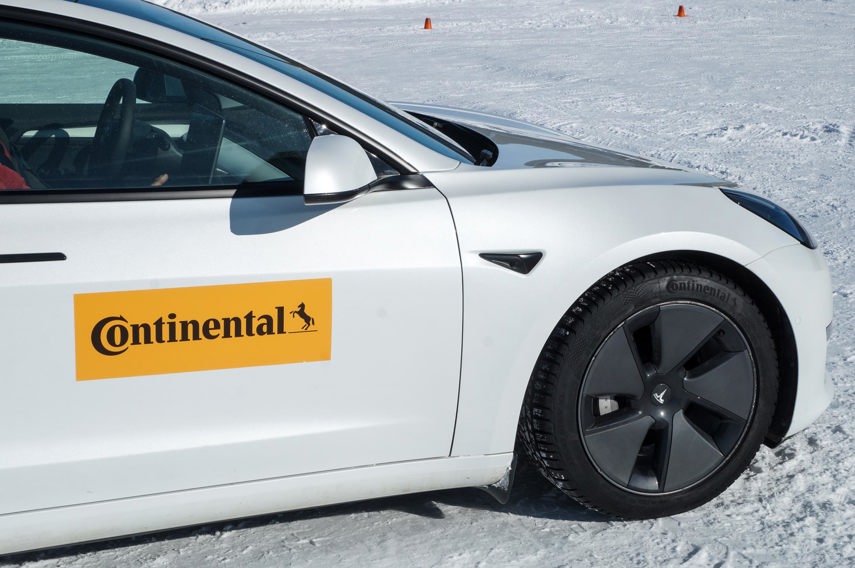
When it comes to picking the right winter tire, consumers have an abundance of choices that can vary depending on what car they drive or with the size of their wheel and tire package. At the bare minimum, winter tires that comply with industry standards will feature the Three-Peak Mountain Snowflake (3PMSF) symbol, which means that they have been tested to work in medium-packed snow. Mud and Snow (M+S) ratings do not have any sort of standardized testing and are often found on all-season tires, which may not be fully up to the job.
Studdable winter tires are often on the more affordable end, and when not fitted with studs (which may be illegal depending on your rural or urban location), they still perform admirably in deep snow and slush. They don’t do as well on ice without the studs.
Studless (non-studdable) winter tires are popular all-around options that do better in snow, ice, and slush. Costs can vary wildly, but in general, you get what you pay for. Higher-end tires will steer and stop better, will be quieter, and may last longer.
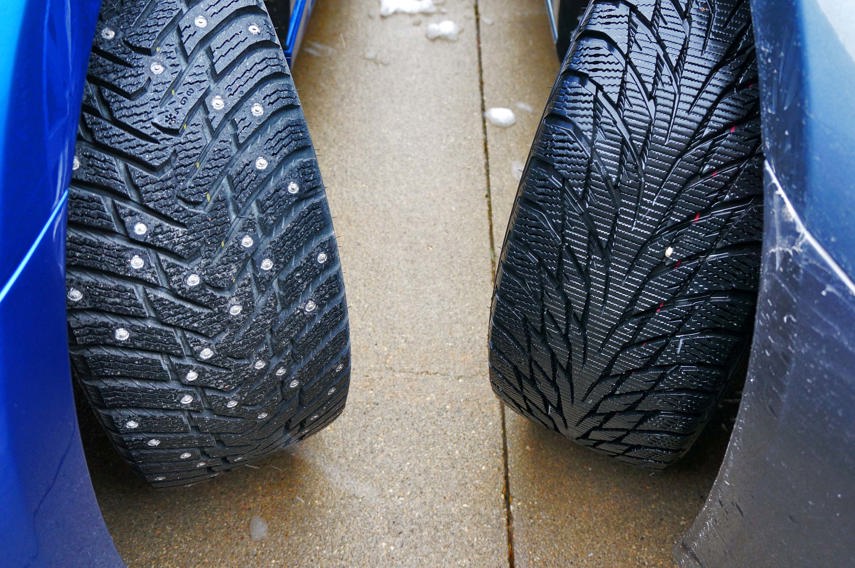
Performance-oriented winter tires are typically a subset of studless tires and are geared toward sportier and higher-end cars. They compromise some performance in snow and ice in exchange for optimal handling in cold and dry conditions, which might work for urban environments where the roads are well-plowed and salted.
All-weather tires are growing in popularity and are 3PMSF rated. As a step up from all-seasons, they provide enhanced traction in cold and inclement road conditions while still being good enough for summertime use. They do not necessarily hold a candle to dedicated winter tires, but can be a reasonable one-size-fits-all compromise for some of the warmer climates found in Canada.
All-terrain tires for trucks and SUVs can be a bit of a confusing situation – but these are not winter tires. They’re certainly rugged, will likely tackle a few trails, and may even be 3 Mountain Peak rated. When they are, they should be considered to be within the same ballpark as an all-weather tire. Without the 3PMSF rating, they should be viewed as an all-season when it comes to winter use.
Final Thoughts
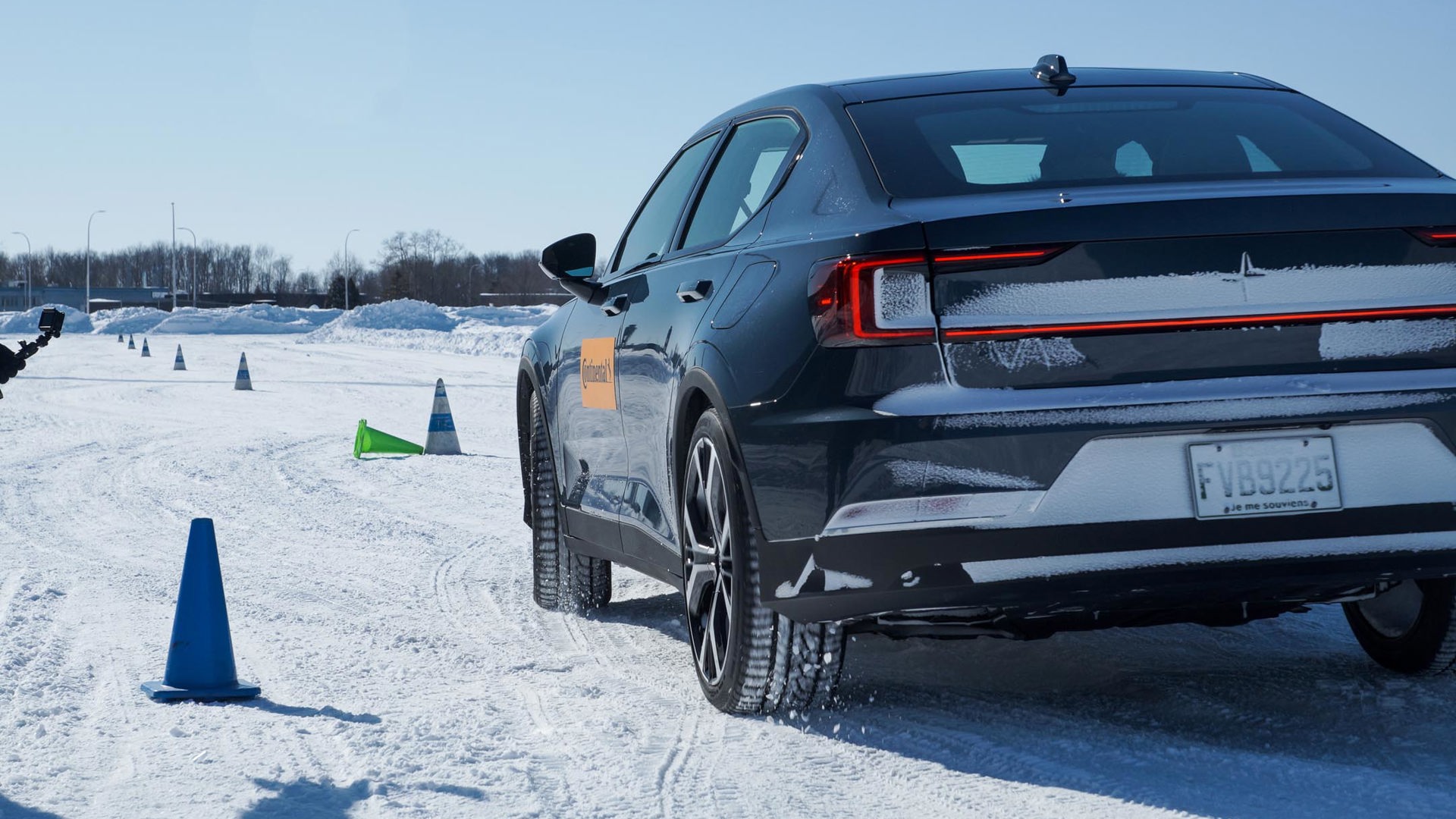
Even with a high level of added safety, it should be said that winter tires are there to give you an added margin for emergency situations, and they do not allow you to drive faster. Motorists still need to slow down below the speed limit and drive according to conditions when the going gets tough.
Overall, we can’t stress enough the importance of having the right tires in the wintertime in Canada. Significantly reduced stopping distances and added maneuverability are key factors in avoiding collisions, and some jurisdictions such as Quebec have mandated winter tires across the board during certain times of the year. Others, such as Ontario, have mandated insurance companies to offer discounts to those who have fitted winter tires on their vehicles – usually defined as having tires with the 3PMSF rating. People who try them for the first time tend to become believers for life – you can’t go wrong with winter tires in this country.
